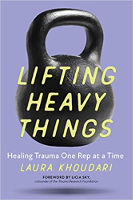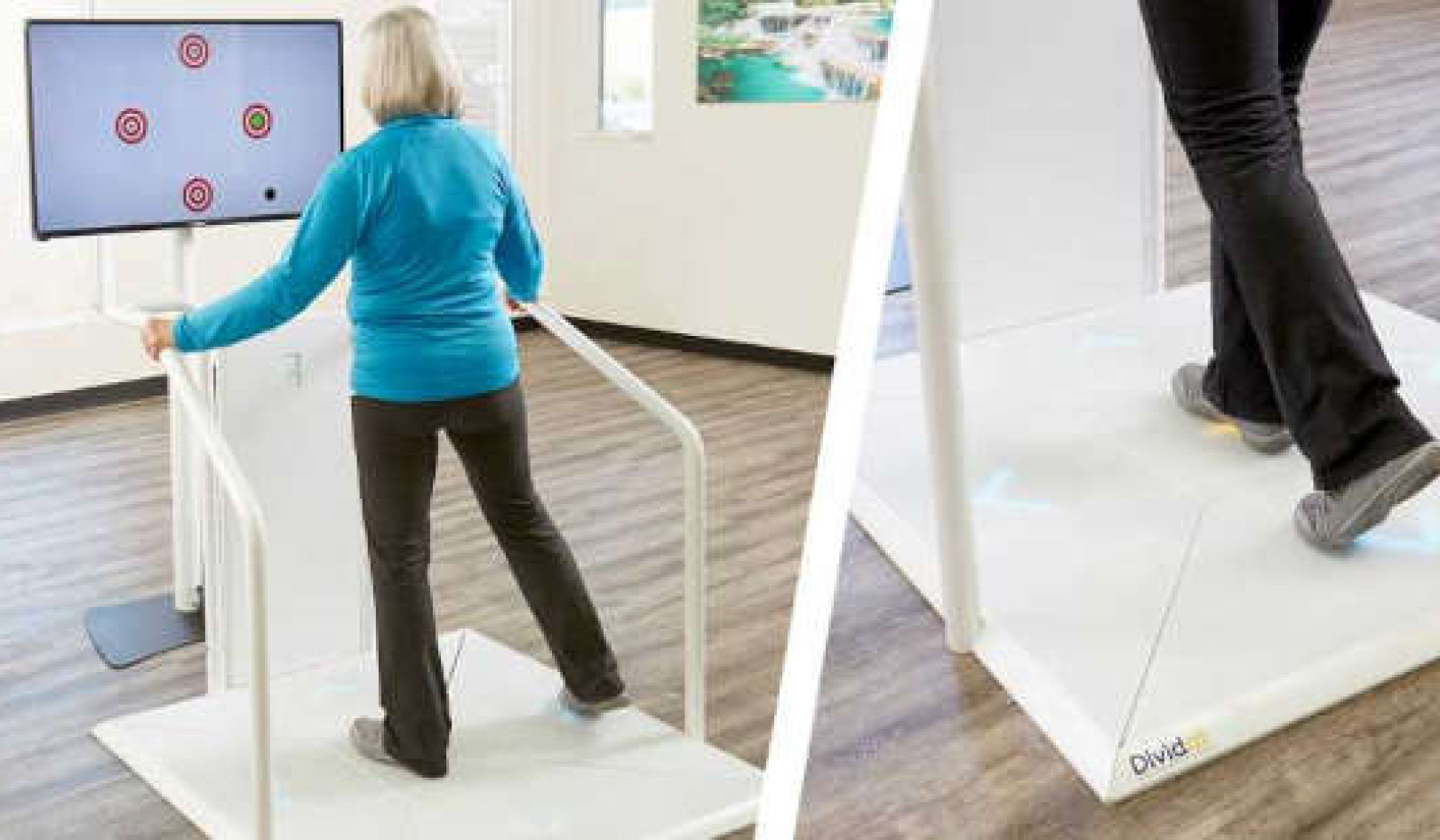
Image by Alexandr Ivanov
Narrated by Marie T. Russell
Figuring out how to initiate (or return) to exercise in a way that feels emotionally and physically safe after experiencing illness, accidents, or acts of violence can be challenging, triggering, and overwhelming. The same could be said for those trying to increase their capacity for life’s stressors or processing their experiences in talk therapy.
If any of these scenarios resonate with you, a trauma-sensitive approach to fitness can help.
Get The Latest By Email
Trauma-Sensitive Workouts
At its heart, a trauma-sensitive approach to fitness accounts for the psychological, emotional, and physiological changes and symptoms of trauma or chronic stress. It makes you the agent of your movement practice, and it prioritizes a feeling of safety in your body and environment while you work out.
Maybe you’ve never heard of trauma-sensitive workouts. Or you believe this approach is limited to yoga. The fact is, trauma-sensitive fitness instruction is still quite new.
As a pioneer in this movement, I recognize that for many people, working out at home is the best (or only) option available. I regularly create home workouts for people living with trauma, chronic stress, chronic fatigue syndrome, and fibromyalgia.
Whether you choose to work out at home because that’s where you feel safest or because of practical issues like caregiving or your budget, I want to help you create the very best practice. Here are six steps to start.
Step 1: Conduct Your Own Intake
Identify your goals, the conditions you need in place to work out, and your resources first!
Your goals may vary. For example, you may want to get grounded in your body. Or you may need to manage chronic pain or improve your sleep hygiene. No matter what they are, your goals will dictate most of the decisions you make, from exercise modality to workout frequency.
Next, define the conditions you need in place. Ask yourself: What do you need from your training environment? Do you need space or privacy? What time of day is best? What equipment do you need? What type of guidance or instruction? Proactively working through these considerations will help you have a successful and sustained practice.
Then look at your resources, which are the things and people you can call on for support, accountability, and motivation while you work toward your goals.
Step 2: Identify The Best Place For Your Workout
No matter the size of your home, 500 or 5,000 square feet, orient yourself by looking around and noticing where things are. Survey your space and consider which part best meets the conditions you identified in Step 1. This might be an area with zero clutter, total privacy, or proximity to a Wi-Fi router.
Be intentional about picking a place to store the equipment you need as well. Have a plan for setting up and putting away equipment if you’re using a multipurpose room or sharing a space with others.
Step 3: Foster A Mind-Body Connection During Your Warm-up
Following a trauma, you may find parts of your body have shut down or are hard to engage with; you may even have no sense of feeling in your body at all. A trauma-sensitive approach to working out means slowly connecting with these parts again.
One way to do this is to warm up with 15- to 60-second isometric holds, in which you contract and hold muscles in each region of your body. Check in with those muscles as they work.
Consider adding iso-hold variations or a slow-moving split squat, glute bridge, wall pushup, and lying Y-raise. If you find any of these exercises are triggering, stop and tend to yourself by reaching out to your resources for help or by using these self-regulation tools.
Step 4: Practice Embodied Movement
Ideally, a trauma-sensitive practice not only makes a workout accessible but also supports your healing. For this, we’ll add embodied movement, also known as movement-based mindfulness. Studies have found that mindful movement can alleviate symptoms for a number of health issues, including chronic pain, and mental health issues like anxiety and depression.
Yoga, along with qigong, the Feldenkrais Method, and the Alexander Technique, are a few practices that commonly fall into this category. But an embodied approach can be applied to any type of movement, including strength training!
After completing your warm-up, tap into those same muscles again and again as you move through your workout. For every movement, no matter the movement, keep your attention on what your muscles are doing.
Step 5: Remember You Are The Expert In You!
Whether you are following this home routine, another written program, or a synchronous class online, remember that you are the expert in your own experience. If you feel you need to rest longer than allotted, rest longer. If you feel you need a variation on a movement to feel safe, do that variation.
Taking action based on your own experience fosters your sense of agency, which is fundamental to feeling safe and healing from trauma.
Step 6: Encourage Recovery
Resilience, which is the ability to return to rest with ease after doing stressful things like exercising or processing trauma, is built during recovery. At the end of your workout, you’ll want to take some time to encourage your body to move from the aroused state of exercising into a less-aroused state in which your systems can recover. A lot of people know this as a “cool-down.”
It’s not until you recover that your body integrates all the lessons it’s learned while moving. Your muscles don’t get stronger the moment you lift heavy things—they get stronger as they recover after you lift them. And your body doesn’t get more efficient during the time you spend training, but afterward, based on what you did in your training and how.
As such, it’s really important that you help your system become less aroused. The easiest way to do this at home after a workout is to incorporate some gentle standing or seated forward folding stretches at the end.
Finding Your Own Path to Healing
Creating a trauma-sensitive home exercise practice is a process. If where you start doesn’t immediately bring you joy, don’t fret; remember you’re taking care of yourself.
Sometimes movement is more therapeutic than fun, and that’s okay. Over time, try different things to find your own path to healing.
Copyright 2021. All Rights Reserved.
Book by this Author
Lifting Heavy Things: Healing Trauma One Rep at a Time
by Laura Khoudari
 In this innovative title, celebrated trainer and trauma practitioner Laura Khoudari brings a fresh approach to healing after trauma, using strength training as an embodied movement practice. Compassionate, witty and fastidiously researched, Khoudari’s debut, Lifting Heavy Things, is a breakthrough title that will empower and inspire you to develop resilience and build emotional and physical strength through working out with weights, while mindful of the ways that trauma can compromise the wellbeing of the mind and body.
In this innovative title, celebrated trainer and trauma practitioner Laura Khoudari brings a fresh approach to healing after trauma, using strength training as an embodied movement practice. Compassionate, witty and fastidiously researched, Khoudari’s debut, Lifting Heavy Things, is a breakthrough title that will empower and inspire you to develop resilience and build emotional and physical strength through working out with weights, while mindful of the ways that trauma can compromise the wellbeing of the mind and body.
For more info and/or to order this book, click here.
About the Author
 Laura Khoudari is a trauma practitioner, certified personal trainer, and corrective exercise specialist. Widely recognized within the trauma and fitness communities, she is passionate about giving people the tools they need to heal from trauma and cultivate wellness. She is the author of Lifting Heavy Things: Healing Trauma One Rep at a Time.
Laura Khoudari is a trauma practitioner, certified personal trainer, and corrective exercise specialist. Widely recognized within the trauma and fitness communities, she is passionate about giving people the tools they need to heal from trauma and cultivate wellness. She is the author of Lifting Heavy Things: Healing Trauma One Rep at a Time.
Learn more at laurakhoudari.com.







